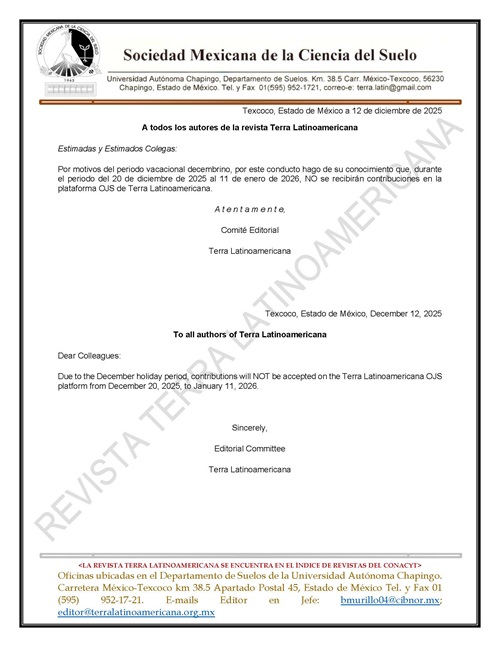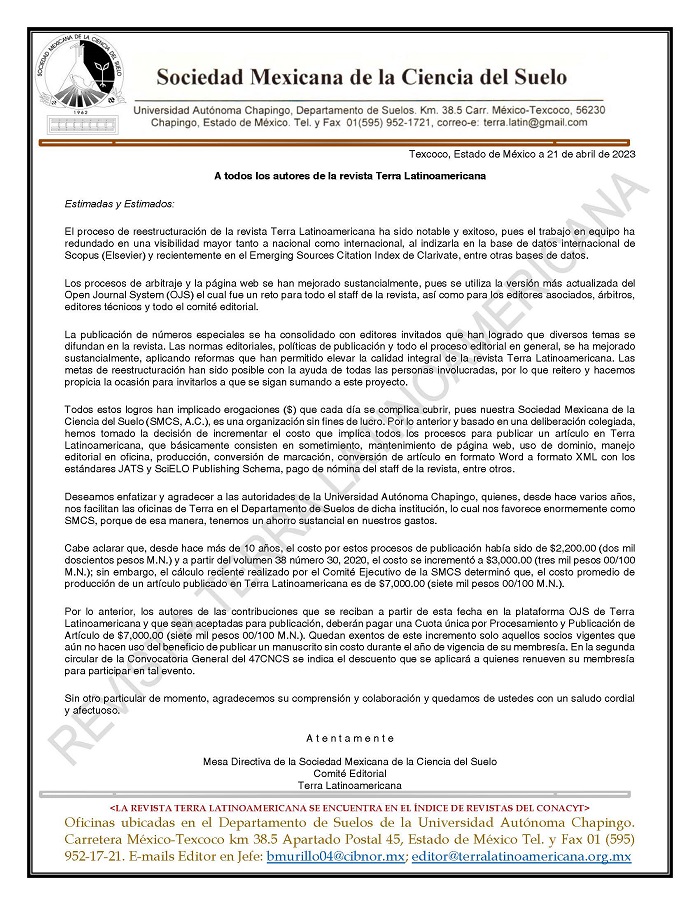Rooting of plant cuttings of Salicornia bigelovii (Torr.) by chitosanasa bioproduct of marine origin
DOI:
https://doi.org/10.28940/terra.v37i4.517Keywords:
IBA, phytohormones, halophytes, micropropagation, rootAbstract
The use of halophytes such as Salicornia bigelovii represents an alternative with economic potential for desert agriculture and coastal areas. However, the success in the establishment of commercial plots has been limited by the low germination percentages of this species. Propagation using plant cuttings represents a viable and rapid alternative to this problem. The formation of functional roots is fundamental in the propagation of plant cuttings and has been achieved through the application of chemical growth regulators. The application of chitosan in some crops has evidenced to be an alternative for the germination process and an enhancer of harvest performance; however, there are no studies that evaluate its effect on the halophyte S. bigelovii. The objective of this research was to evaluate the effect of marine-derived chitosan and indole butyric acid as root-promoting agents in cuttings of Salicornia bigelovii. The concentrations (individually and combined) of chitosan at 100 and 50% and indole butyric acid were applied at a rate of 0.937 and 1.25 g kg‑1. A completely randomized design of nine treatments and f ive repetitions was used and 225 experimental units were evaluated. The following variables were measured: root length, fresh weight and total dry weight of the root, and number and length of new shoots. The results showed that the most eff icient treatment was 100% chitosan + 0.937 g kg-1 indole butyric acid, promoting the production of photosynthetic shoots up to 800%. These results indicate that it is feasible to achieve the propagation of Salicornia by means of cuttings using marine-derived chitosan as a growth promoter.Downloads
Publication Facts
Reviewer profiles N/A
Author statements
- Academic society
- Terra Latinoamericana
- Publisher
- Mexican Society of Soil Science, C.A.

















